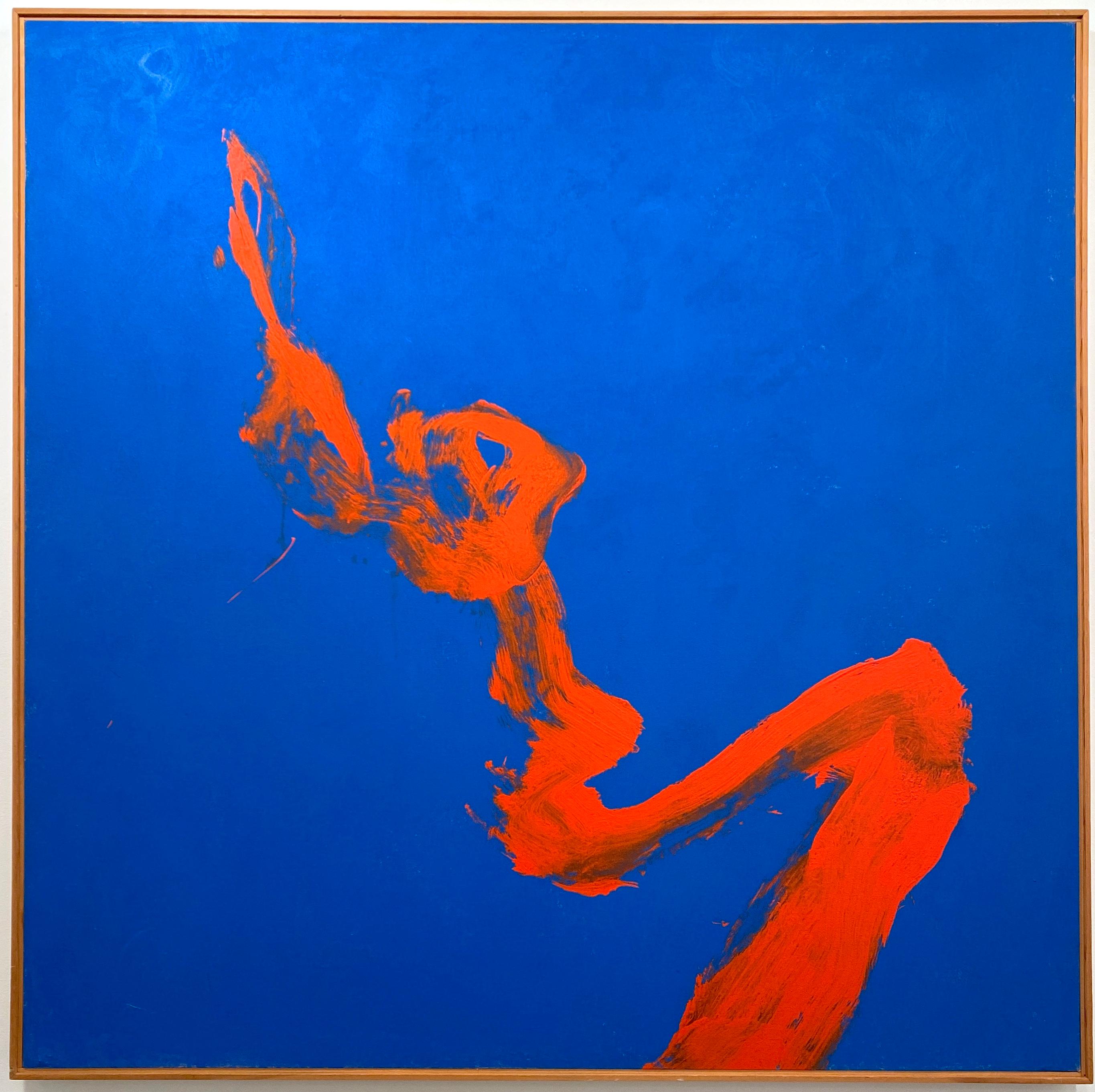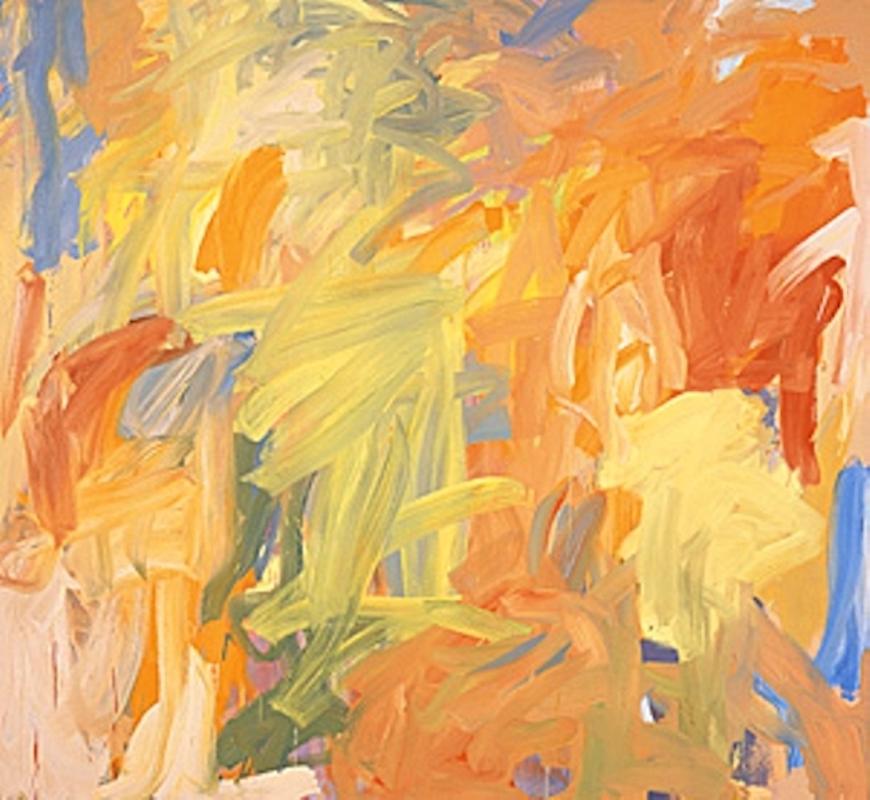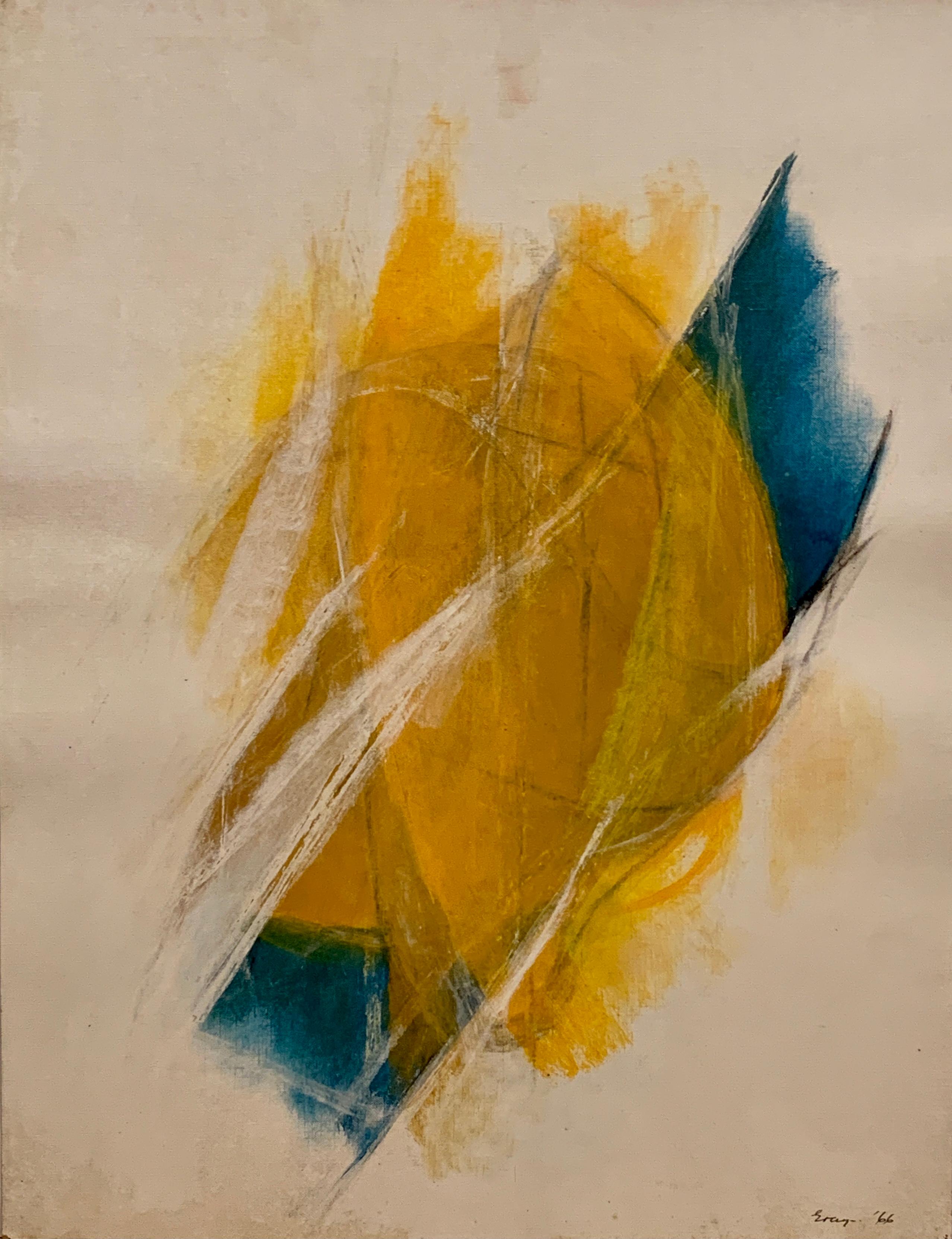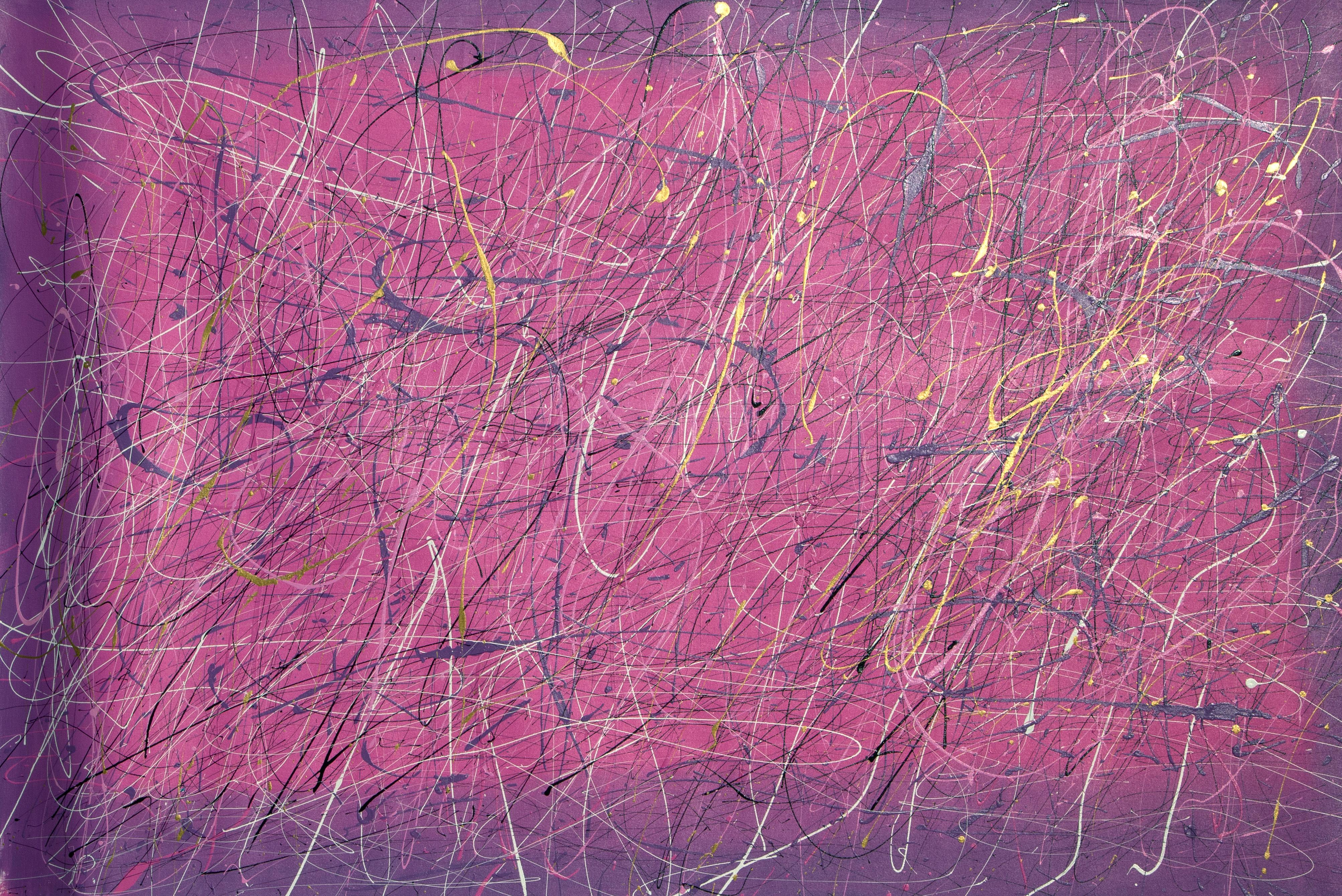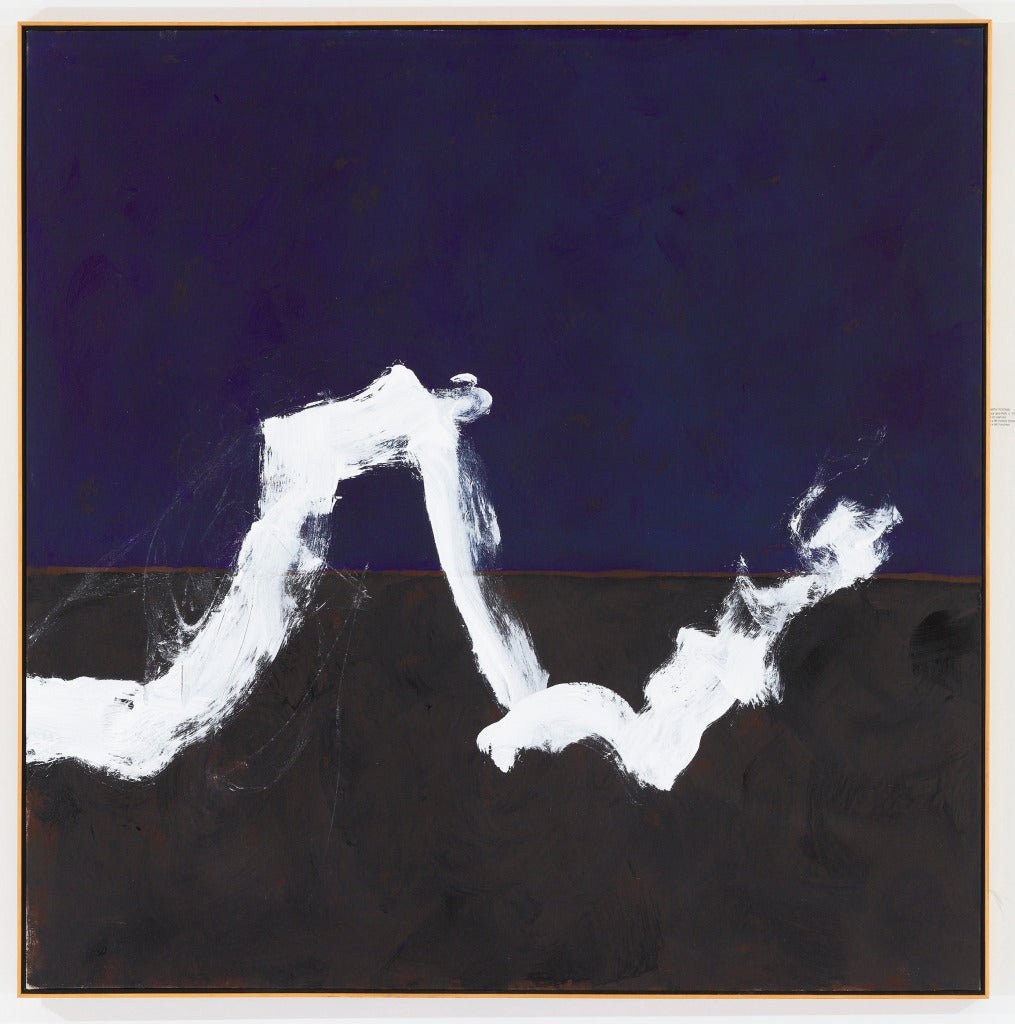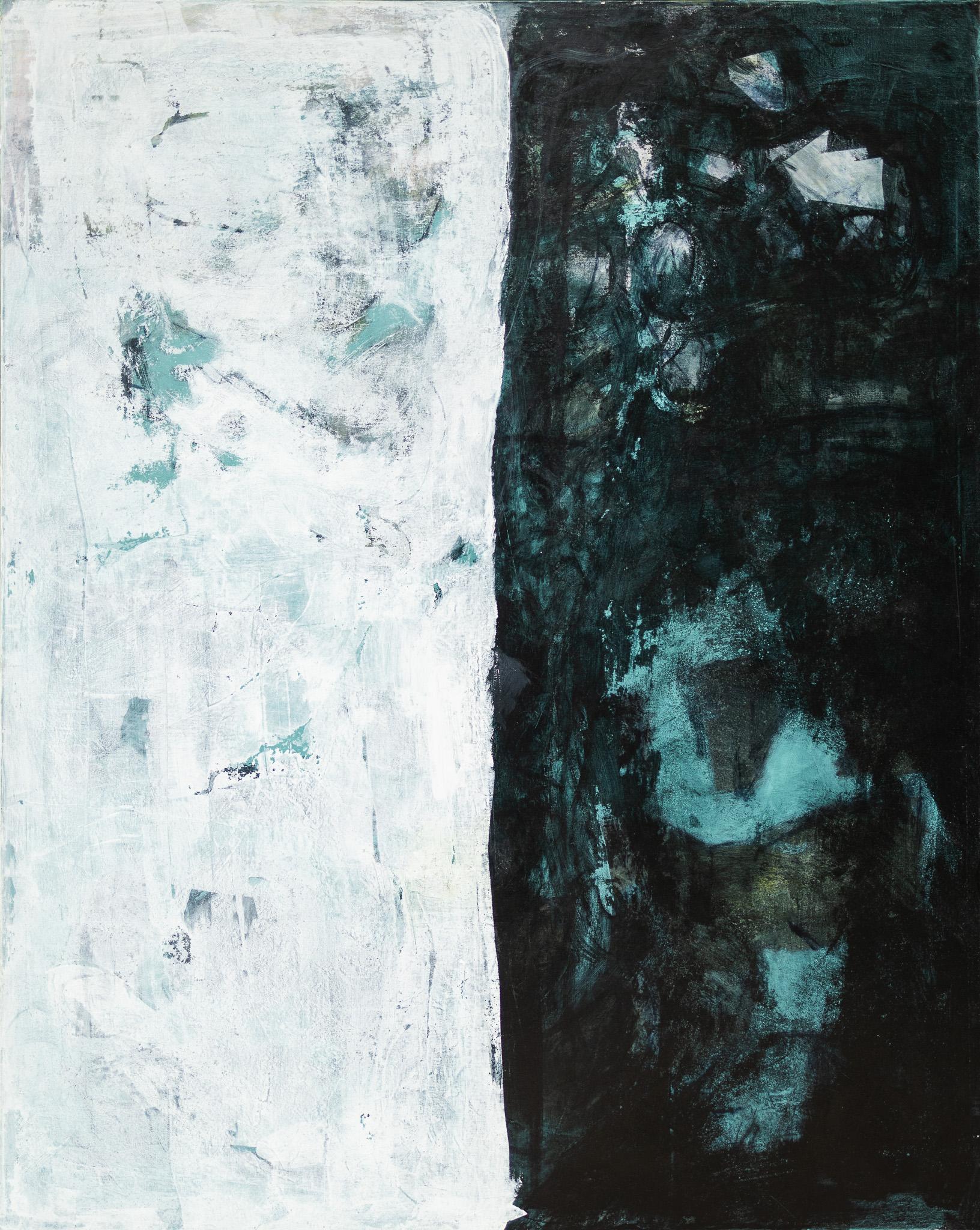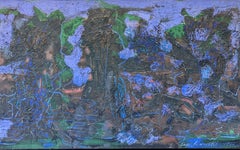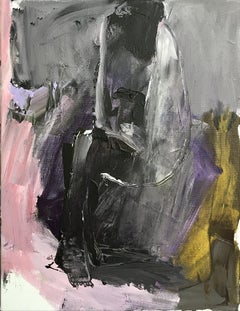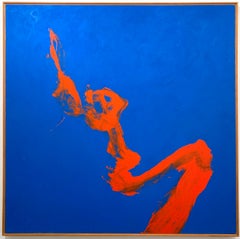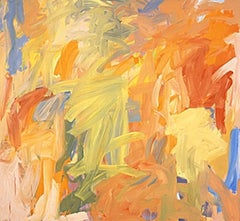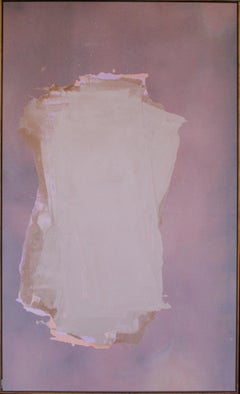
"Grey Nomad" Sherron Francis, Female Abstract Expressionism, Color Field
View Similar Items
Sherron Francis"Grey Nomad" Sherron Francis, Female Abstract Expressionism, Color Field1972
1972
About the Item
- Creator:Sherron Francis (1940, American)
- Creation Year:1972
- Dimensions:Height: 79.5 in (201.93 cm)Width: 48.25 in (122.56 cm)
- Medium:
- Movement & Style:
- Period:
- Condition:
- Gallery Location:New York, NY
- Reference Number:1stDibs: LU1841210811852
Sherron Francis
Sherron Francis was born in the Chicago suburb of Downers Grove, Illinois in 1940. She studied fine art at the University of Oklahoma from 1958 to 1960 before transferring to the Kansas City Art Institute. She ultimately graduated from the Institute in 1963. In Missouri, Francis met Dan Christensen (Class of 1964), an artist friend, who would play a key role in her career throughout the next two decades. Francis then received her MFA from the University of Indiana before assuming a teaching position at Eastern Michigan University.
In 1968, with only $300 on hand, Francis moved to 16 Waverly Place in Soho. At the time, the neighborhood boasted some of the biggest names in Abstract Expressionism. She quickly became friends with Walter Darby Bannard, Peter Young, Larry Zox and Larry Poons, who all lived and worked in the neighborhood. In fact, Francis introduced Larry Poons to his now wife, Paula, a friend and student of Francis.
By 1971, Christensen, who was exhibiting with Andre Emmerich, introduced Francis to the legendary gallerist. There was no better gallery to be showcasing Abstract Expressionism and Color Field painting during this decade for an artist. For context, in 1972, Emmerich held solo exhibitions by art titans, such as Hans Hofmann, Al Held, Esteban Vicente, David Hockney and Morris Louis. In 1973 alone, Emmerich gave one-person exhibitions to Helen Frankenthaler, Kenneth Noland, Hofmann, Jack Bush and a new discovery: 32-year-old Sherron Francis. The exhibition for Francis was a great success with Peter Schjeldahl positively reviewing it in the New York Times.
Francis’s career now took off with the stain paintings. In 1973, Francis exhibited at the Whitney Biennial and then received a second solo exhibition at Emmerich the following year. Corporate collections and private enthusiasts, including Helen Frankenthaler and Clement Greenberg, rushed to purchase her paintings. More than sixty of her paintings sold in one year at Emmerich’s gallery. Throughout the 1970s and early 1980s, Francis exhibited at other leading American galleries, including Janie C. Lee, Barbara Kornblatt, Douglas Drake, Rubiner and Tibor de Nagy.
In the late 1970s, Francis became more interested in utilizing new acrylic and gel mediums that were becoming available. By 1980, she was also creating clay works and exhibiting them alongside Kikuo Saito and Betty Woodman. In 1983, art historian Jack Flam selected one of Francis’s paintings in his “Artists Choose Artists II” exhibition, consisting of works by Carl Andre, Jim Dine, Brice Marden, Richard Serra and Frank Stella.
Francis taught at several institutions including the Ridgewood School of Art and Design from 1972 to 1985 and Cooper Union from 1978 to 1985.
The landscape in downtown New York began to shift in the mid-1980s. When her landlord sold the building on Waverly Place, Francis moved to the North Fork permanently. Her move effectively severed ties with not just New York City, but also the art world, and her reputation went into eclipse. This sets the stage for rediscovery in 2022.
Find original Sherron Francis art on 1stDibs.
(Biography provided by Lincoln Glenn)
- "Night Road" Gerome Kamrowski, Abstract Expressionism Surrealism, Purple ImpastoBy Gerome KamrowskiLocated in New York, NYGerome Kamrowski (1914 - 2004) Night Road, 1966 Acrylic on canvas 58 1/4 x 96 1/4 inches Signed and dated Provenance: The Artist The Kamrowski Estate (by family descent in 2004) Exhibited: The Detroit Institute of Arts, Detroit, Michigan, 56th Exhibition for Michigan Artists, November 18 - December 31, 1966, no. 32, illustrated (Night Road was the winner of the "Phyllis King Weiner Memorial Prize" at this exhibition). Ann Arbor, University of Michigan Museum of Art, Gerome Kamrowski: A Retrospective Exhibition, August 30 - October 16, 1983, no. 70, illustrated. Tarpon Springs, Florida, Leepa-Rattner Museum of Art, St. Petersburg College, Gerome Kamrowski: An American Surrealist, September 8 - October 27, 2002, no. 23. Chelsea, Michigan, River Gallery, Gerome Kamrowski: 1914-2004, A Memorial Retrospective, October 30 - December 5, 2004. Gerome Kamrowski was born in Warren, Minnesota, on January 19, 1914. In 1932 he enrolled in the Saint Paul School of Art (now Minnesota Museum of American Art - MMAA), where he studied with Leroy Turner, and Cameron Booth. Both Turner and Booth had been students of Hans Hofmann, and were also associated with the Abstraction-Création group in Paris. It was from these peers that Kamrowski was introduced to a "kind of expressionist cubism." In 1933 Kamrowski was awarded a scholarship to the Art Students League, where he would study in New York under Hans Hofmann. Unfortunately, immigration problems had prevented Hofmann from assuming his post. Nevertheless, Kamrowski decided to remain in New York for a short time, to attend classes taught by George Grosz. After a few weeks, he returned to St. Paul, and found a position in the mural painting division of the Minnesota FAP/WPA (Works Progress Administration). In 1936 he contributed “Synthetic Cubist Style” frescoes in the Northrup Auditorium of the University of Minnesota. In 1937 Kamrowski went to Chicago to study under László Moholy-Nagy and Alexander Archipenko at the New Bauhaus (now Illinois Institute of Technology's Institute of Design). There he was exposed to new and interesting ideas regarding the role of nature in art and the "geometric basis of natural form". In 1938 Kamrowski received a Guggenheim fellowship to attend Hans Hofmann's summer school in Provincetown, Massachusetts. He then relocated to New York where he met William Baziotes. Together they shared a fascination in Surrealist automatic writing, and both artists explored its possibilities in their paintings. Kamrowski was particularly drawn to Surrealism's fundamental appeal of intuition over intellect. He was interested seeking a process that "binds all things together...a kind of cosmic rhythm". Throughout the late 1930s and early 1940s while living in New York, Kamrowski became an integral part of the emerging surrealists. In 1942, the artist Roberto Matta attempted to form a group of artists to investigate new applications for Surrealist methods. He invited Kamrowski, along with William Baziotes, Jackson Pollock, Peter Busa...Category
1960s Abstract Expressionist Abstract Paintings
MaterialsCanvas, Acrylic
- "Lexington, " Larry Zox, Abstract Expressionism, Minimalism, Brown ModernismBy Larry ZoxLocated in New York, NYLarry Zox Lexington, 1973 Acrylic on canvas 61 x 49 inches Provenance: Andre Emmerich Gallery, New York Janie C. Lee Gallery, Houston, Texas Private Collection, Greenwood Village, Colorado Exhibited: New York, Andre Emmerich Gallery, Larry Zox: New Paintings, March 10 - 28, 1973. Houston, Texas, Janie C. Lee Gallery, Larry Zox, February - April, 1974. A painter who played an essential role in the Color Field discourse of the 1960s and 1970s, Larry Zox is best known for his intensely and brilliantly colored geometric abstractions, which question and violate symmetry. Zox stated in 1965: “Being contrary is the only way I can get at anything.” To Zox, this position was not necessarily arbitrary, but instead meant “responding to something in an examination of it [such as] using a mechanical format with X number of possibilities." What he sought was to “get at the specific character and quality of each painting in and for itself,” as James Monte stated in his introductory essay in the catalogue for Zox’s 1973–74 solo exhibition at the Whitney Museum of American Art. Zox also at times used a freer, more intuitive method, while maintaining coloristic autonomy, which became increasingly important to him in his later career. Zox began to receive attention in the 1960s, when he was included in several groundbreaking exhibitions of Color Field and Minimalist art, including Shape and Structure (1965), organized by Henry Geldzahler and Frank Stella for Tibor de Nagy, New York, and Systemic Painting (1966), organized by Lawrence Alloway for the Guggenheim Museum. In 1973–74, the Whitney’s solo exhibition of Zox’s work gave recognition to his significance in the art scene of the preceding decade. In the following year, he was represented in the inaugural exhibition of the Hirshhorn Museum, which acquired fourteen of his works. Zox was born in Des Moines, Iowa. He attended the University of Oklahoma and Drake University, and then studied under George Grosz at the Des Moines Art Center. In 1958, Zox moved to New York, joining the downtown art scene. His studio on 20th Street became a gathering place for artists, jazz musicians, bikers, and boxers. He occasionally sparred with visiting fighters. He later established a studio in East Hampton, a former black smithy used previously by Jackson Pollock. Zox’s earliest works were collages consisting of pieces of painted paper stapled onto sheets of plywood. He then produced paintings that were illusions of collages, including both torn- and trued-edged forms, to which he added a wide range of strong hues that created ambiguous surfaces. Next, he omitted the collage aspect of his work and applied flat color areas to create more complete statements of pure color and shape. He then replaced these torn and expressive edges with clean and impersonal lines that would define his work for the next decade. From 1962 to 1965, he produced his Rotation series, at first creating plywood and Plexiglas reliefs, which turned squares into dynamic polygons. He used these shapes in his paintings as well, employing white as a foil between colors to produce negative spaces that suggest that the colored shapes had only been cut out and laid down instead of painted. The New York Times noted in 1964: “The artist is hip, cool, adventurous, not content to stay with the mere exercise of sensibility that one sees in smaller works.” In 1965, he began the Scissors Jack series, in which he arranged opposing triangular shapes with inverted Vs of bare canvas at their centers that threaten to split their compositions apart. In several works from this series, Zox was inspired by ancient Chinese water vessels...Category
1970s Abstract Expressionist Abstract Paintings
MaterialsCanvas, Acrylic
$38,500 Sale Price30% Off - "Cepheus B, " Yeffe Kimball, Female Native American Abstract ExpressionistLocated in New York, NYYeffe Kimball (c. 1905 - 1978) Cepheus B, 1963 Signed, titled, and dated on the reverse Acrylic on canvas 34 x 40 inches Provenance: Private Collection, New York Estate of the above, 2022 Born in Mountain Park, Oklahoma, in 1914, Effie Y. Goodman subsequently spent her early years on her grandfather’s farm in Missouri. She attended college in Ada and the University of Oklahoma in Norman from 1931-1935. After college, she went to New York where she worked under distinguished artists such as George Bridgman and John Corbin at The Art Students League in New York in the early 1940s. She adopted the name Yeffe Kimball, adapting her first husband's surname of Campbell to form Kimball, and never returned to her small-town roots. She became a world traveler and student, studying intermittently with Fernand Léger in Paris from 1940-1941. In 1948, she married Harvey L. Stalin, an atomic scientist. Her art was influenced by Stalin’s work and she entered a new era, focusing on burning planets, atmospheric gases, and flashing comets. Her work was also inspired by American Indian spiritual...Category
1960s Abstract Expressionist Abstract Paintings
MaterialsCanvas, Acrylic
$5,200 Sale Price20% Off - "Untitled, " Sherron Francis, Female Abstract Expressionism, White ImpastoBy Sherron FrancisLocated in New York, NYSHERRON FRANCIS (AMERICAN, B. 1940) Untitled, 1977 Acrylic on canvas 33 x 27 1/2 inches Signed, titled and dated on the reverse A reappraisal is long ...Category
1970s Abstract Expressionist Abstract Paintings
MaterialsCanvas, Acrylic
- "Strawberry V" Sherron Francis, Female Abstract Expressionism, Red Color FieldBy Sherron FrancisLocated in New York, NYSherron Francis Strawberry 5, 1977 Signed, titled and dated on the reverse Acrylic and mixed media on canvas 56 1/2 x 22 inches Artists such as Helen Frankenthaler, Morris Louis, Da...Category
1970s Abstract Expressionist Abstract Paintings
MaterialsCanvas, Acrylic
- "Pete's Neck", Sherron Francis, Female Abstract Expressionist, Beige Color FieldBy Sherron FrancisLocated in New York, NYSHERRON FRANCIS (AMERICAN, B. 1940) Pete's Neck, 1981 Acrylic on canvas 34 1/2 x 22 inches Signed, titled and dated on the reverse A reappraisal is lo...Category
1980s Abstract Expressionist Abstract Paintings
MaterialsCanvas, Acrylic
- Ecuadorian Contemporary Art by Doïna Vieru - GrisBy Doïna VieruLocated in Paris, IDFAcrylic on canvasCategory
2010s Abstract Expressionist Abstract Paintings
MaterialsCanvas, Acrylic
- Floating RedBy Cleve GrayLocated in New York, NYCLEVE GRAY Floating Red, 1990 Acrylic on canvas 60 x 60 inchesCategory
1990s Abstract Expressionist Abstract Paintings
MaterialsCanvas, Acrylic
Price Upon Request - Up From The GroundBy Leah DurnerLocated in New York, NYLEAH DURNER Up from the Ground, 2000 Acrylic and oil on canvas 60 x 66 inchesCategory
Early 2000s Abstract Expressionist Abstract Paintings
MaterialsCanvas, Oil, Acrylic
Price Upon Request - GroveBy Leah DurnerLocated in New York, NYLEAH DURNER Untitled, 2000 Acrylic and oil on canvas 60 x 66 inchesCategory
Early 2000s Abstract Expressionist Abstract Paintings
MaterialsCanvas, Oil, Acrylic
Price Upon Request - Ocean - abstract painting in black, yellow, turquoise blueBy Lena CherLocated in Fort Lee, NJInterior design paintings. Abstraction art, made in yellow, black, white and turquoise blue. Can be positioned in horizontal or vertical mode. Lena Chernyavskaya / LENA CHER Born i...Category
2010s Abstract Expressionist Abstract Paintings
MaterialsCanvas, Resin, Acrylic
- "Terra" - Abstract Portrait of a Young Man in Earthtone by MasriBy Masri HayssamLocated in Carmel, CAPresenting "Terra" a work that emerges as a profound expression of stillness and human depth, as conceived by the adept hands of Masri. Within the 40" x 30" expanse, this abstract po...Category
2010s Abstract Expressionist Portrait Paintings
MaterialsCanvas, Mixed Media, Oil, Acrylic
$49,920 Sale Price20% OffFree Shipping

